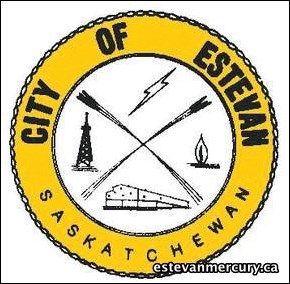The City of Estevan is continuing to make strides toward becoming one of the fairest tax jurisdictions in the province.
The Canadian Federation of Independent Business released its annual tax fairness report last week and it said that among Saskatchewan cities, Estevan has the seventh best ratio between commercial taxes and residential taxes.
Using figures from 2011, the report said Estevan businesses paid $3,416 in taxes on an assessed valuation of $200,000. Meanwhile, a homeowner with a residence also assessed at $200,000 pays $1,523 in taxes for a ratio of 2.24. That is down slightly from 2010 when Estevan had a ratio of 2.27.
Overall, the CFIB report decried the fact that very little progress has been made throughout the province on improving fairness and four cities had their gap worsen. It added that on average, small business owners paid 2.18 times the municipal property taxes of residential property owners.
"Unfortunately, for small business owners the vast majority of Saskatchewan municipalities saw their municipal tax gaps either worsen or stay the same in 2011," said Marilyn Braun-Pollon, CFIB's vice-President, Prairie and Agri-business. "It is troubling that only 26 of the 63 municipalities modestly improved their municipal tax gap in 2011. Small business owners continue to get the short end of the property tax stick."
Estevan city manager Jim Puffalt said he is happy to see the gap continue to shrink in the Energy City.
"Back in 2002, council made a commitment to do something about the high property tax ratio and we went from the highest to the middle of the pack," Puffalt said. "We are quite enthused with that and glad that it is being recognized."
Yorkton had the worst ratio among the 14 cities at 3.79 while Weyburn was second worst with a ratio of 3.47. North Battleford is third worst at 3.32 and Melville, which has the highest commercial and residential taxes according to the report, has the fourth worst ratio at 3.18.
The best ratio belongs to one of Saskatchewan's newest cities, Martensville which sat at 1.57 in 2011. Saskatoon has the second best ratio at 1.78 while Regina, Moose Jaw and Melfort followed.
"If you factor in the provincial education property taxes, commercial property owners in Saskatchewan cities are still paying on average 2.26 times the property taxes of a residential property owner," noted Braun-Pollon. "In addition to paying more, business owners typically receive fewer services, as they pay for things like garbage disposal on their own. This means small business owners are paying more than their fair share."
"In the coming weeks, we will hear a lot of commitments from municipal candidates about infrastructure, crime and housing. But we also need to hear their vision to address small business concerns in their community. With cities receiving a 134 per cent increase in municipal revenue sharing since 2007, we certainly don't want to hear about property tax hikes or a penny tax."
The CFIB also included a breakdown of smaller communities in the province. In southeast Saskatchewan, Moosomin had the worst tax gap while Carlyle and Oxbow were third and fourth respectively and Carnduff was the sixth worst.
The report included a handful of recommendations from the CFIB on policy matters. They feel the provincial government should continue to fund a larger portion of the education costs and would also like to see a cap on the gap between residential and commercial taxes. The CFIB would also like to see the province reject any call to give municipalities more taxation power and to also reject calls for tax increases to finance infrastructure.
On a local level, they recommend governments limit year over year spending growth to a maximum of inflation plus population and introduce a plan to reduce the size and cost of the municipal civil service. The report said there is also no appetite for tax increases at the local level.
Estevan had a one mill increase in 2012 and it seems somewhat likely that with so much infrastructure work needed, another increase will take place in 2013.
Puffalt said the reaction to this year's increase has been relatively positive as residents realize there is much work to be done.
"I think it was fairly well accepted from what I can see," said Puffalt. "In talking to some of the people in the community, they are saying 'let's go and let's get at it.'"




